In fact, the history of human domestication of dogs is still not fully understood, with many mysteries yet to be unraveled. The perspectives offered are merely hypotheses, and it is still too early to draw conclusions.
Tibetan Mastiffs are referred to as “snow dogs” by herders in the Qinghai-Tibet Plateau, holding a significant place in the history and culture of these pastoral communities. In the past, when modern herding technologies were not developed, the Qinghai-Tibet Plateau was home to numerous wild animals that posed threats to livestock. Keeping a few Tibetan Mastiffs was the simplest and most common method to deter wolves.
The Tibetan Mastiff excels in this role; it is a very fierce breed, and it was once believed that a single Tibetan Mastiff could defeat three wolves.
Initially, Tibetan Mastiffs were only popular among herding communities, but after the 1980s, they began to gain recognition abroad. Due to their aggressive nature and lion-like appearance, they became sought after by many foreigners, earning the nickname “Eastern dogs.”
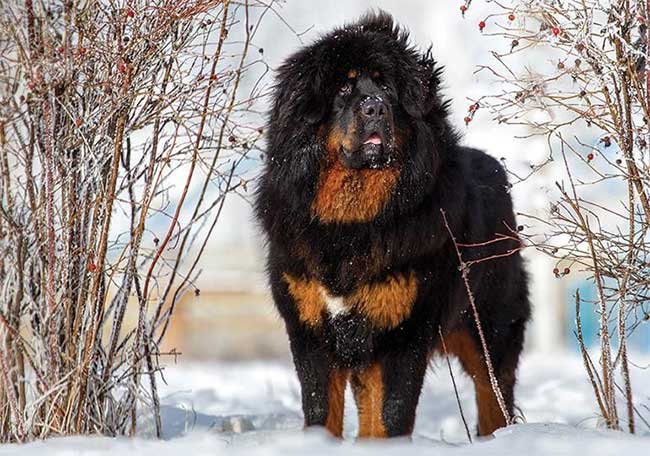
In the past, Tibetan Mastiffs were only popular among herding communities.
After the 1990s, a craze for Tibetan Mastiffs began to form in China, and some merchants seized the business opportunity, promoting Tibetan Mastiffs as “divine dogs.” This led to the ancient plateau breed becoming famous among the public.
Due to exaggerated promotion of this breed, breeding practices became rampant, with many breeders intentionally crossbreeding them with other breeds to achieve a dramatic increase in coat quality and size. This ultimately led to a significant decline in both the reputation and quality of this breed.
Fairly speaking, the Tibetan Mastiff was originally an excellent plateau dog, possessing traits that make it unsuitable for low-altitude environments as a household pet, unlike many other popular breeds.
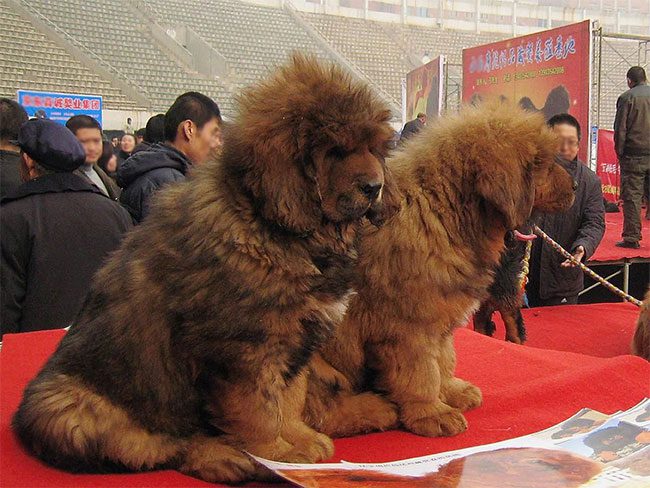
The craze for Tibetan Mastiffs began to form in China.
“The dog” followed the first immigrants to the Qinghai-Tibet Plateau
Regarding the origins of the Tibetan Mastiff, in some stories, legends, and literary works, there is a saying that goes “nine dogs for one mastiff,” implying a brutal selection process to obtain a good mastiff. They would often drop ten mastiff puppies into a deep pit, with little to no food, just enough for one to survive.
Under the pressure of hunger, these puppies would fight and tear at each other, and eventually, only the strongest and fiercest puppy would remain, at which point that lone puppy would be considered a Tibetan Mastiff.
This saying adds a layer of mystique to the breed. Essentially, Tibetan Mastiffs share characteristics with breeds like Chow Chows, Shar-Peis, Crested dogs, or our H’mong tail-less dogs; they all have independent personalities and ancient genetic lines. However, Tibetan Mastiffs are particularly fierce and powerful.
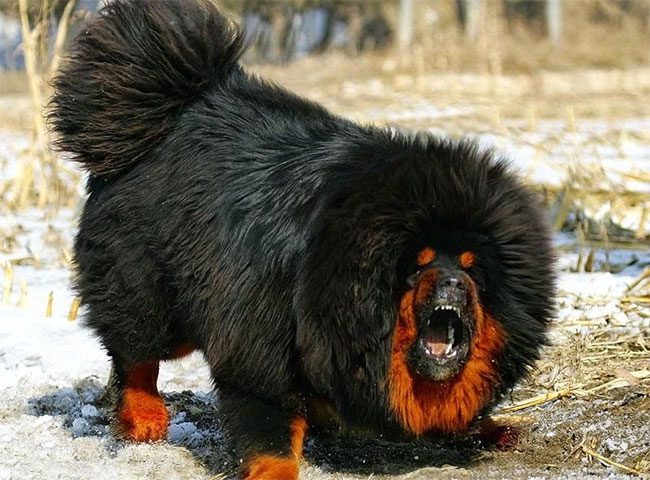
Tibetan Mastiffs are particularly fierce and powerful.
Historically, many archaeological studies have shown that Tibetan Mastiffs did not originally exist on the Qinghai-Tibet Plateau, but as humans migrated, this breed gradually appeared there.
About 24,000 years ago, when a group of early humans moved to the Qinghai-Tibet Plateau to settle, they brought along some “grass dogs” that lived at lower altitudes.
Over time, these dogs adapted to the plateau environment, leading to the development of the Tibetan Mastiff breed we see today.
Some even question whether the timeline for dog domestication by humans was around 16,000 years ago or 24,000 years ago.
In reality, the history of dog domestication is still not fully researched, with many mysteries yet to be solved, and the perspectives offered are merely hypotheses, making it too early for conclusions.
Crossbreeding with ancient Tibetan wolves for high-altitude adaptation
Breeds from lower altitudes initially struggled to adapt to the plateau. Just like humans from the plains, when they ascend to high-altitude areas with thin air, many experience altitude sickness and cannot exert themselves physically.
This was also true for the first dogs; over time, as the dog population increased, some began to breed with local ancient Tibetan wolves, producing puppies that inherited certain essential genes, which allowed them to adapt to high altitudes.
This gene is known as the “EPAS1” gene. Scientists have discovered it in many species that live at high altitudes, including snow leopards and Tibetan wolves, but it is absent in animals living at lower altitudes, such as domestic dogs, gray wolves, and golden jackals…
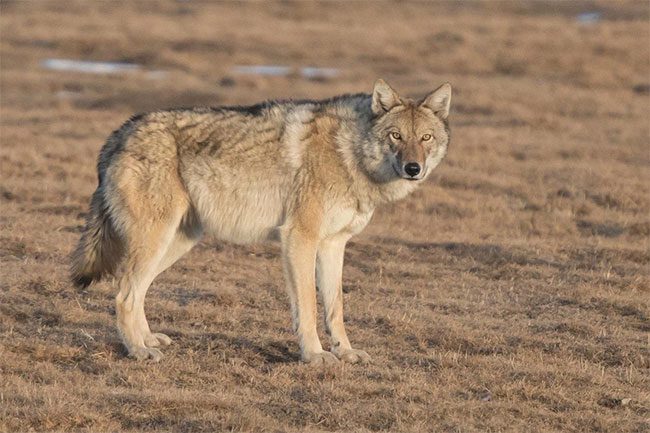
Research shows that the “EPAS1” gene can influence the mechanism regulating hemoglobin production in animals, making their bodies more sensitive to oxygen changes, allowing them to survive for extended periods in low-oxygen environments while maintaining high-intensity activity.
After breeding with Tibetan wolves, the puppies inherited this gene, establishing a strong foothold on the Qinghai-Tibet Plateau.
Scientists have constructed a phylogenetic tree of dogs and discovered that dogs and wolves diverged long ago, evolving in different directions. However, after the ancestors of Tibetan Mastiffs migrated to the Qinghai-Tibet Plateau, they interbred with wolves and acquired some wolf genetics.
Due to the harsh, cold climate of the Qinghai-Tibet Plateau, to keep warm, these puppies gradually underwent several adaptive changes throughout their long lives on the plateau, such as developing thicker fur and a more substantial layer of fat.
Of course, the process of dog evolution is fundamentally a process of human selection and breeding. After many generations of selection and breeding, humans ultimately obtained the desired traits in a specific dog breed.
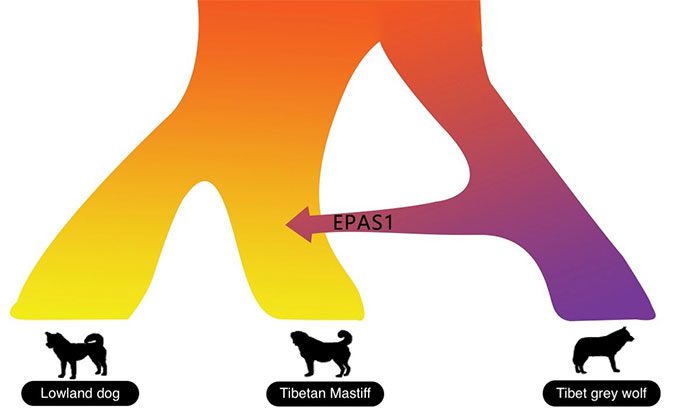
As previously mentioned, the most important role of Tibetan Mastiffs in ancient times was to protect livestock and fend off wolves, which meant that smaller, gentler breeds could not fulfill this critical task and thus were not bred. In contrast, the massive, fierce Tibetan Mastiff, with its imposing presence, became the preferred dog of herders.
In 2016, some scholars in Beijing photographed Tibetan Mastiffs chasing snow leopards on the Qinghai-Tibet Plateau, competing for food with snow leopards and surrounding brown bears. While Tibetan Mastiffs may not match snow leopards and Tibetan brown bears in strength, they possess high social qualities and always live in packs.
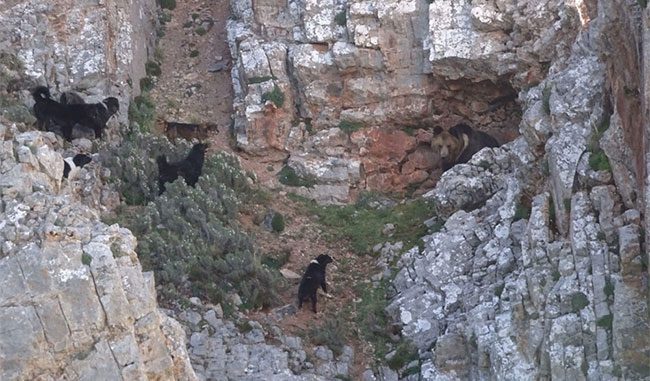
From the photos taken by scholars in Beijing, it can be seen that three or four Tibetan Mastiffs can chase away snow leopards, and five or more can surround and overpower brown bears.
Although Tibetan Mastiffs no longer receive the same level of attention from the community, whether we acknowledge it or not, we must recognize the fact that Tibetan Mastiffs raised and bred for commercial purposes are not the same as those born for work and fulfilling their original functions. However, when born and serving in accordance with their intended purposes, Tibetan Mastiffs can not only adapt to the harsh climatic conditions of the plateau but also effectively perform their duties, standing shoulder to shoulder with other breeds in dealing with wild animals.
At present, as the trend of keeping Tibetan Mastiffs as pets has declined, a significant number of these dogs have been abandoned. This situation not only harms the ecosystem but also poses a direct threat to humans. As the wilderness gradually recovers, stray Tibetan Mastiffs have begun to attack humans, livestock, and even hunt snow leopards, which has increasingly turned them into a potential danger on the plateau.





















































